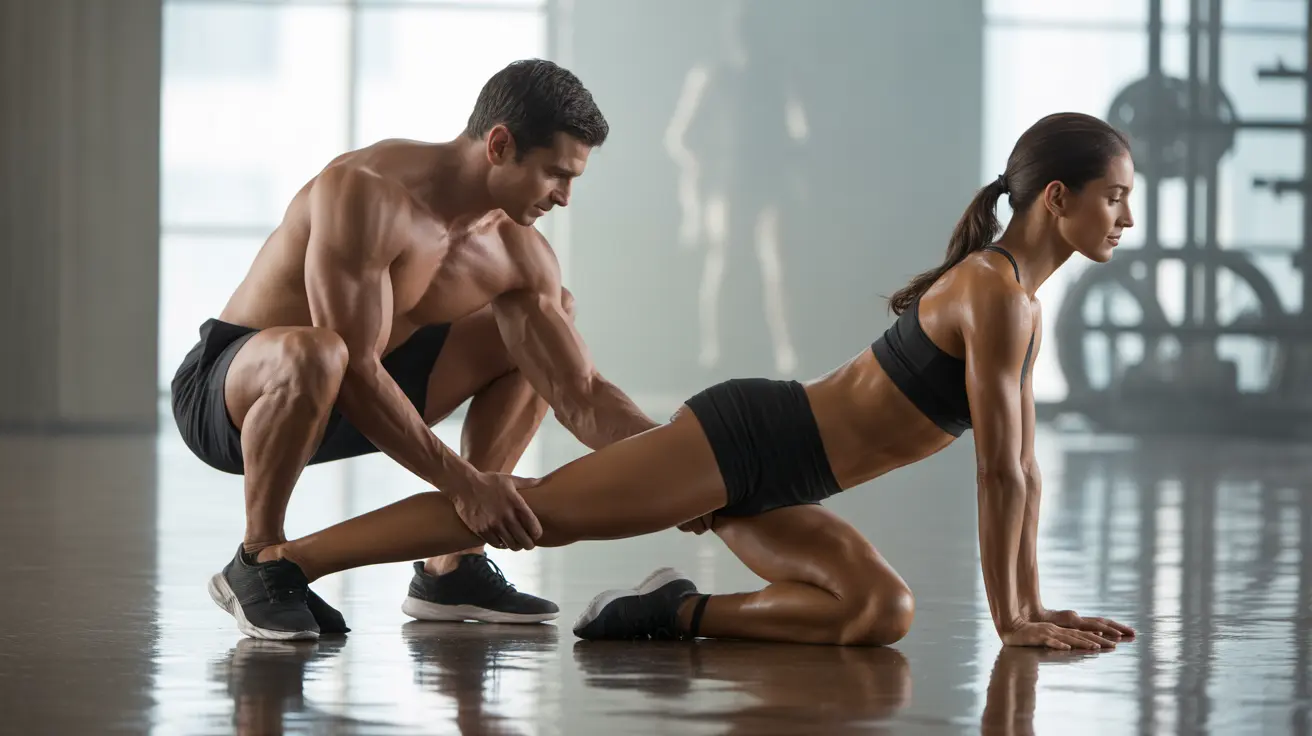PNF stretching, or Proprioceptive Neuromuscular Facilitation stretching, represents one of the most effective advanced flexibility training methods available today. This sophisticated technique combines targeted muscle contractions with passive stretching to achieve superior range of motion and flexibility gains. Whether you're an athlete looking to enhance performance or someone recovering from injury, understanding PNF stretching can be a game-changer for your flexibility goals.
Originally developed for rehabilitation purposes, PNF stretching has evolved into a widely-used method across various fitness and therapeutic applications. This comprehensive guide will explore how PNF stretching works, its proper execution, benefits, and important safety considerations.
Understanding PNF Stretching Mechanics
PNF stretching works by taking advantage of your body's natural protective reflexes that typically limit flexibility. Through a specific sequence of muscle contractions and relaxations, PNF techniques effectively "trick" these reflexes, allowing for greater range of motion than traditional static stretching alone.
The technique typically involves three key phases: a passive stretch, an isometric contraction against resistance, and a final deeper passive stretch. This sequence helps to override the stretch reflex and achieve more significant flexibility gains.
Common PNF Stretching Techniques
Contract-Relax Method
This popular PNF variation involves stretching a muscle group passively, then contracting it isometrically against resistance for 5-8 seconds, followed by a period of relaxation and deeper stretch. This method is particularly effective for large muscle groups like the hamstrings and quadriceps.
Hold-Relax Method
Similar to contract-relax, but this technique focuses on relaxing the target muscle completely after the contraction phase, allowing for a more pronounced stretch response. This approach is often preferred for smaller muscle groups and areas with limited range of motion.
Proper PNF Stretching Execution
While some PNF techniques can be performed solo, many are most effective with a trained partner or professional. The basic steps include:
- Assume the initial stretch position
- Hold the stretch for 10-15 seconds
- Contract the muscle against resistance for 5-8 seconds
- Relax completely for 2-3 seconds
- Move into a deeper stretch for 15-30 seconds
Benefits and Applications
PNF stretching offers numerous advantages over traditional stretching methods:
- Increased range of motion
- Enhanced muscle flexibility
- Improved muscular strength
- Better neuromuscular efficiency
- Accelerated rehabilitation progress
Safety Considerations and Best Practices
While effective, PNF stretching requires careful attention to proper form and timing:
- Never force a stretch beyond comfort
- Maintain proper breathing throughout
- Start with lighter contractions until familiar with the technique
- Allow 48 hours between intensive PNF sessions
- Consult a healthcare provider if recovering from injury
Frequently Asked Questions
What is PNF stretching and how does it improve flexibility compared to regular stretching?
PNF stretching is an advanced flexibility technique that combines muscle contraction and relaxation phases to achieve greater range of motion. It typically produces faster and more significant flexibility gains than regular stretching because it works with your body's natural reflexes rather than against them.
How do you properly perform PNF stretching and do you need a partner or professional to assist?
While some PNF techniques can be performed alone, many are most effective with a trained partner. Proper execution involves a sequence of passive stretching, isometric contraction, and relaxation phases. Working with a qualified professional is recommended when first learning the technique.
What are the benefits of PNF stretching for injury prevention and rehabilitation?
PNF stretching helps prevent injuries by improving flexibility, strength, and range of motion. In rehabilitation settings, it's particularly effective for restoring normal movement patterns and breaking through flexibility plateaus after injury.
When is the best time to do PNF stretching for athletic performance—before or after exercise?
PNF stretching is most effective when performed after exercise or as a separate flexibility session. Due to its intensity, it's generally not recommended immediately before athletic performance as it may temporarily reduce muscle power and coordination.
Are there any risks or safety precautions to consider when using PNF stretching techniques?
Key safety considerations include avoiding overstretching, maintaining proper form, and ensuring adequate rest between sessions. People with recent injuries, certain medical conditions, or muscle strains should consult healthcare providers before starting PNF stretching.




